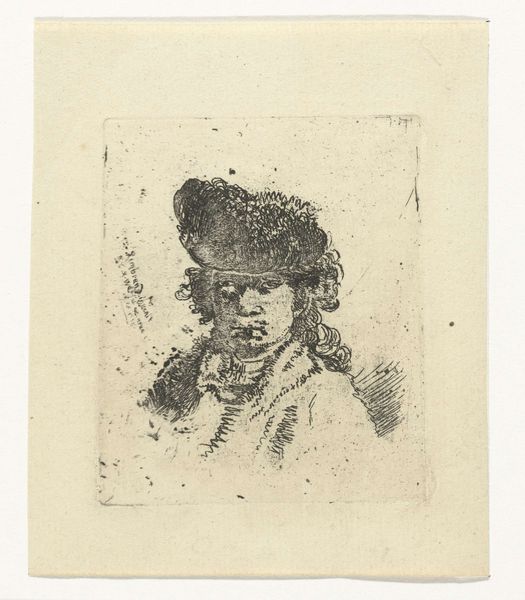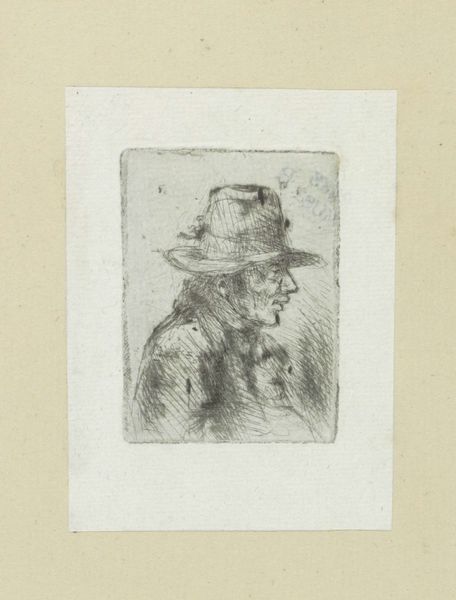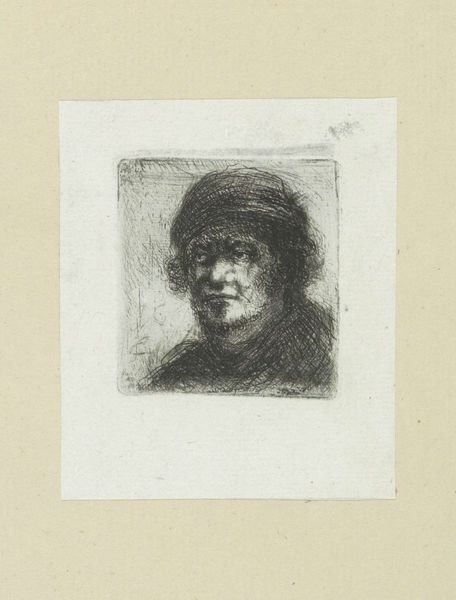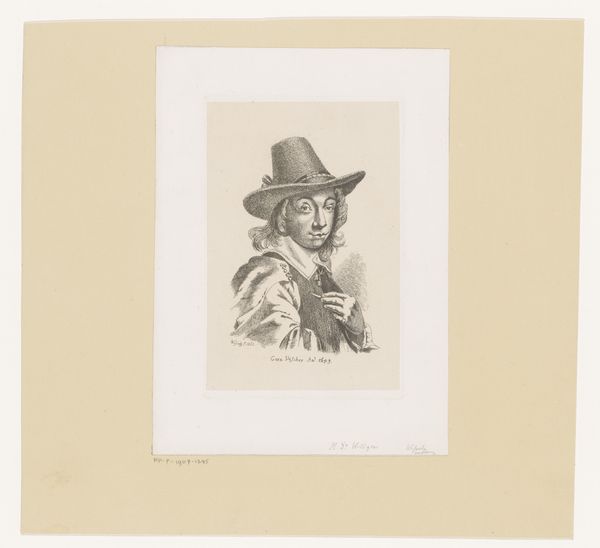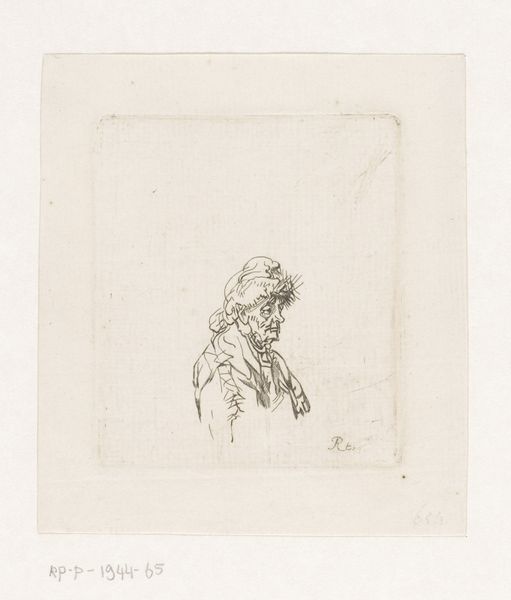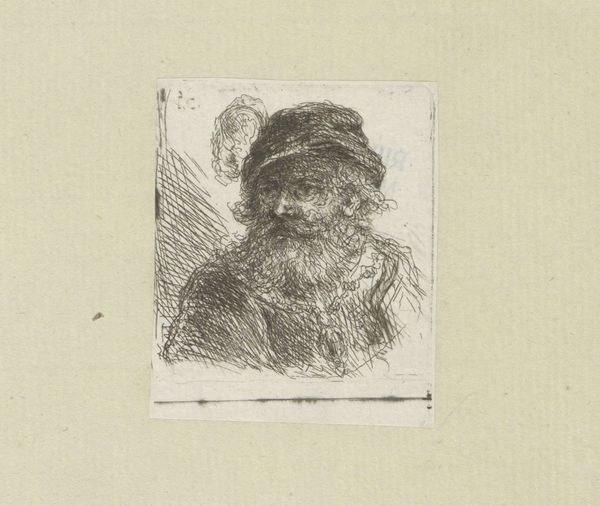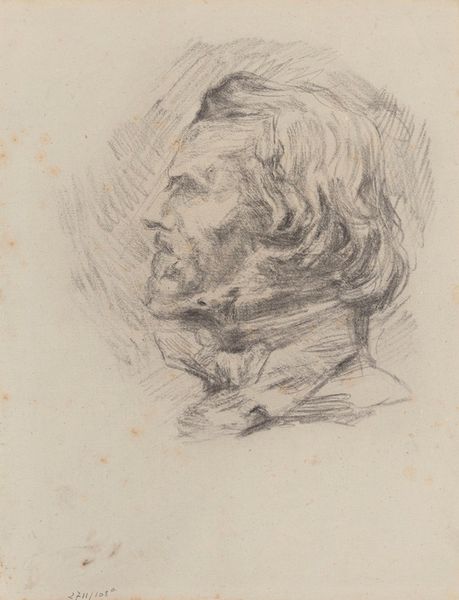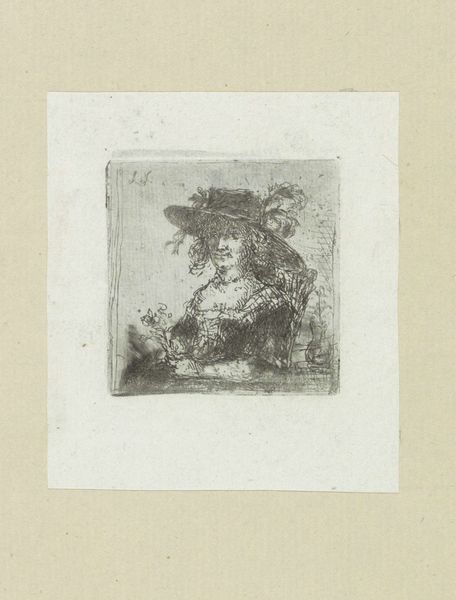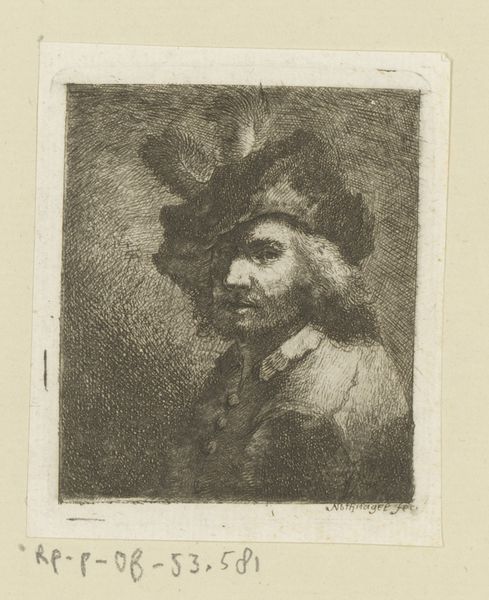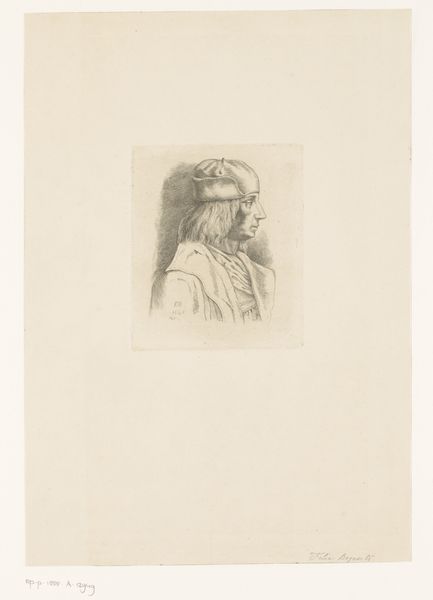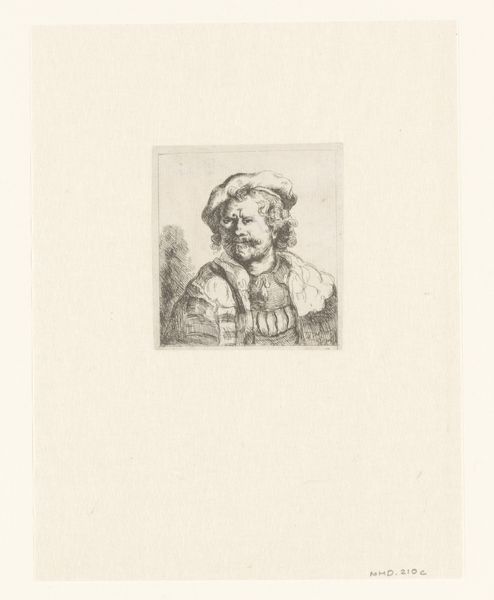
drawing, pencil
#
portrait
#
pencil drawn
#
drawing
#
pencil drawing
#
romanticism
#
pencil
#
history-painting
#
academic-art
Dimensions: height 52 mm, width 33 mm
Copyright: Rijks Museum: Open Domain
Johann Ludwig Ernst Morgenstern made this etching, "Head of an Unknown Man," sometime in the late 18th or early 19th century. It is a small, intimate work depicting the head and shoulders of a man wearing a soft cap. Morgenstern was German, and his artistic production occurred during the Enlightenment. This was a period when the authority of institutions such as the church and monarchy was being challenged. The rise of the middle class also led to new ideas about individuality and freedom. Artists at the time created images that reflected the common person. The soft cap worn by this man was associated with the lower classes. By depicting an anonymous man, Morgenstern invites the viewer to think about the humanity of everyday people. To understand this etching better, we could research the artistic conventions of portraiture during the Enlightenment or the changing status of the middle and lower classes in late 18th-century Germany.
Comments
No comments
Be the first to comment and join the conversation on the ultimate creative platform.
